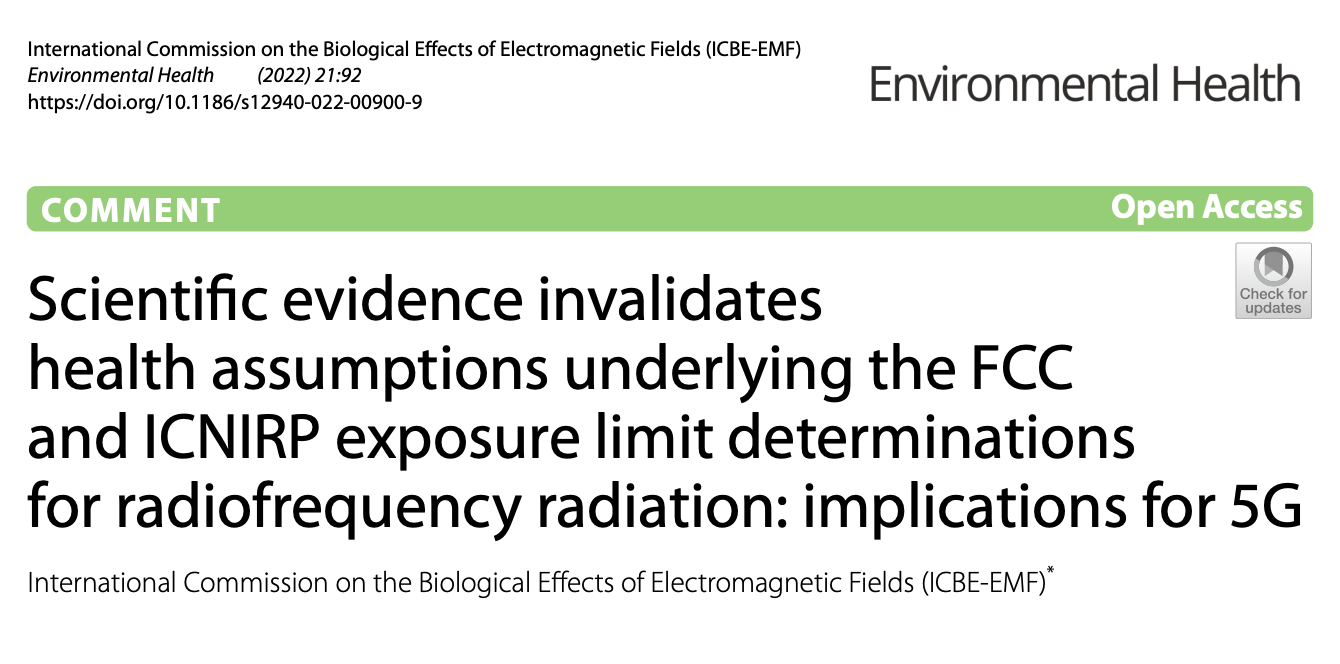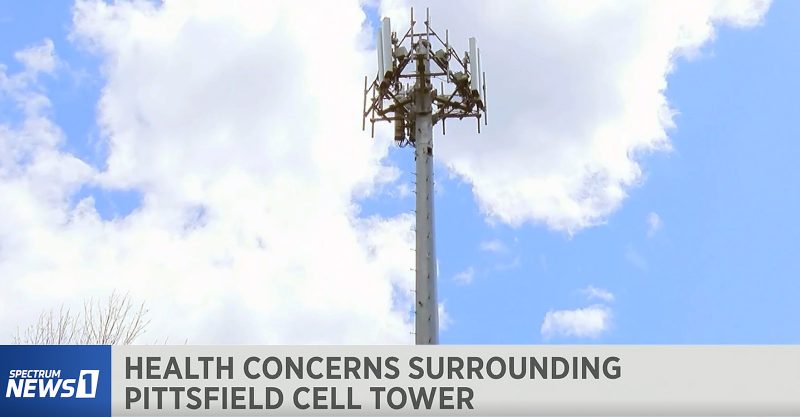I became your enemy because I tell you the truth
More evidence of regulatory and corporate media capture

TAKE-AWAY MESSAGES (from the press release)
- ICBE-EMF scientists report that exposure limits for radio frequency (or wireless) radiation set by ICNIRP and the FCC are based on invalid assumptions and outdated science,; and are not protective of human health and wildlife.
- ICBE-EMF calls for an independent assessment of the effects and risks of radio frequency radiation based on scientific evidence from peer-reviewed studies conducted over the past 25 years. The aim of this assessment would be to establish health-protective exposure standards for workers and the public.
- The public should be informed of the health risks of wireless radiation and encouraged to take precautions to minimize exposures, especially for children, pregnant women and people who are electromagnetically hypersensitive.
- ICBE-EMF calls for an immediate moratorium on further rollout of 5G wireless technologies until safety is demonstrated, and not simply assumed.
Abstract
In the late-1990s, the FCC and ICNIRP adopted radiofrequency radiation (RFR) exposure limits to protect the public and workers from adverse efects of RFR. These limits were based on results from behavioral studies conducted in the 1980s involving 40–60-minute exposures in 5 monkeys and 8 rats, and then applying arbitrary safety factors to an apparent threshold specifc absorption rate (SAR) of 4W/kg.
The limits were also based on two major assumptions: any biological effects were due to excessive tissue heating and no efects would occur below the putative threshold SAR, as well as twelve assumptions that were not specified by either the FCC or ICNIRP. In this paper, we show how the past 25 years of extensive research on RFR demonstrates that the assumptions underlying the FCC’s and ICNIRP’s exposure limits are invalid and continue to present a public health harm.
Adverse effects observed at exposures below the assumed threshold SAR include non-thermal induction of reactive oxygen species, DNA damage, cardiomyopathy, carcinogenicity, sperm damage, and neurological efects, including electromagnetic hypersensitivity. Also, multiple human studies have found statistically signifcant associations between RFR exposure and increased brain and thyroid cancer risk. Yet, in 2020, and in light of the body of evidence reviewed in this article, the FCC and ICNIRP reafrmed the same limits that were established in the 1990s.
Consequently, these exposure limits, which are based on false suppositions, do not adequately protect workers, children, hypersensitive individuals, and the general population from short-term or long-term RFR exposures. Thus, urgently needed are health protective exposure limits for humans and the environment. These limits must be based on scientific evidence rather than on erroneous assumptions, especially given the increasing worldwide exposures of people and the environment to RFR, including novel forms of radiation from 5G telecommunications for which there are no adequate health effects studies.
This paper also demonstrates how the U.S. Federal Communications Commission (FCC) and the International Commission on Nonionizing Radiation Protection (ICNIRP) have virtually ignored hundreds of peer reviewed studies that document adverse health effects at exposures below the threshold dose claimed by these agencies.
The authors argue that the thresholds currently used are based on science from the 1980s and are wrong. The authors provide abundant documentation that the approved thresholds do not adequately protect workers, children, people with electromagnetic hypersensitivity, and the public from exposure to the nonionizing radiation from wireless data transmission.
Furthermore, they point to evidence that the exposure limits for RF Radiation on the environment have not been adequately addressed.
… “neither the FCC nor the ICNIRP take into consideration effects of this radiation on wildlife.
The constant movement of most wildlife species in and out of varying artificial EMF can result in high exposures near communication structures, especially for flying species such as birds and insects. There is a substantial amount of scientific literature on the disrupting effects of RFR on wildlife (e.g., [190–206]).
Many nonhuman species use Earth’s geomagnetic fields for activities such as orientation and seasonal migration, food finding, mating, nest and den building [190]. For example, migratory bird species [191, 192], honeybees [193], bats [194], fsh [195–197], and numerous other species sense Earth’s magnetic fields with specialized sensory receptors.
Mechanisms likely involved in magneto-reception include magnetic induction of weak electric signals in specialized sensory receptors [198], magneto-mechanical interactions with the iron-based crystal magnetite [194], and/or free-radical interactions with cryptochrome photoreceptors [191, 192]. Each of these sensing processes shows extreme sensitivity to low intensity changes in electromagnetic fields. For a fuller description of the mechanisms by which non-human species use magneto-reception to perform essential life activities see Levitt et al. [190].
Te following studies represent a few of the many examples of the disrupting effects of low-level exposures to RF-EMF on magneto-reception and the natural behavior of wildlife. Oscillating magnetic fields have been reported to disrupt the ability of migratory birds to orient and navigate in Earth’s geomagnetic field
Precautionary Measures Recommended by the International EMF Scientist Appeal
- 1) Priority should be given to protect children and pregnant women
- 2) Guidelines and regulatory standards should be strengthened
- 3) Manufacturers should be encouraged to develop safer technologies
- 4) The public should be fully informed about the potential health risks from electromagnetic energy and taught harm reduction strategies
- 5) Medical professionals need to be educated about the biological effects of electromagnetic energy and be provided training on treatment of patients with electromagnetic sensitivity
- 6) Governments need to fund training and research on electromagnetic fields and health that is independent of industry
- 7) The media should disclose experts’ financial relationships with industry when citing their opinions regarding health and safety aspects of EMF emitting technologies
- 8) Radiation-free areas need to be established, especially for individuals with EHS
In so many words, a careful reading of the above recommendations suggest that regulatory capture has indeed occurred and that capture includes corporate media. Strong words. Very similar to the pervasive pattern of regulatory and corporate media capture observed and documented during the COVIDcrisis.
Michael Loyman

